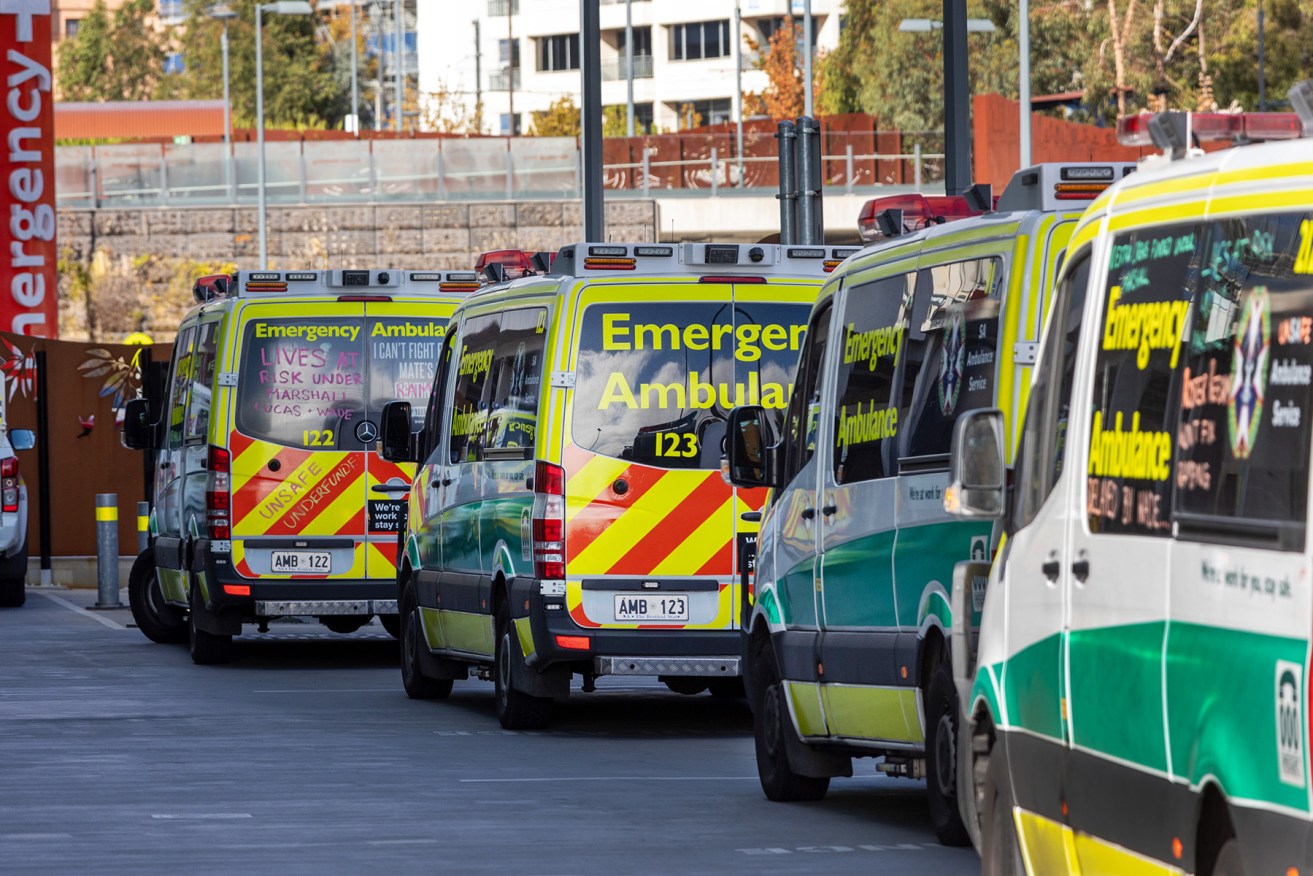‘Healthy’ elderly clogging hospital beds set to ramp up
More than 100 ‘healthy’ elderly patients on average a day are taking up Adelaide metropolitan hospital beds, with new data showing the logjam is likely to worsen as the number of those aged over 65 doubles in coming decades.


Ambulance ramping outside the Royal Adelaide Hospital. Photo: Tony Lewis/InDaily
Health Minister Chris Picton said there has been a significant increase in the number of elderly public hospital patients well enough to be discharged but waiting for residential aged care places in the past year, compared to an average 88 a day in August last year.
As of 9 August, Picton said there were 107 elderly patients in hospital waiting to be discharged to a standard residential aged care placement, with 35 waiting for a place in a secure dementia unit.
“Often, our older patients no longer need hospital level care but are unable to safely go home. In these instances, it falls to the hospital to find them a bed in a residential aged care facility,” he said.
But frontline clinicians are reporting increasing difficulties finding patients places, especially those with complex care needs, with Picton saying “aged care providers are no longer offering placements for these patients due to increasing costs, regulatory challenges, acuity, and complexity”.
Council on the Ageing SA’s (COTA SA) chief executive officer Miranda Starke said the problem was exacerbated by “extensive waiting lists” for older people needing vital in-home services like showering and cleaning.
“Anyone who has interacted with the aged care system in recent years knows that there are simply not enough providers of in-home aged care to meet the demand for services,” Starke said.
“Older people do not want to be in hospital – they want to be at home, but no-one wants older people to be discharged only to have another unplanned hospital admission a few days later when this could be avoided.”
As the State Government continues to face intense scrutiny over packed hospitals and ambulance ramping, the national Intergenerational Report 2023 released yesterday forecast already unmet demand for health and help services is likely to explode over the next four decades.
Report forecasting shows health spending on Australians aged over 65 years is expected to increase six-fold and the old-age dependency ratio is expected to increase from 26.6 per cent to 38.2 per cent.
“The number of years lived in ill-health” has increased and “population ageing is one of the major forces shaping Australia’s future”, the report found.
Starke said while new funding and Home Care Packages are welcome, “many older people who have been assessed as needing support are left waiting at home alone without it” as the sector struggles with workforce shortages and meeting demand.
“We understand hospital staff want to ensure that patients are returning to living arrangements that will be appropriate for their needs. This is particularly important for older people who live alone of which there is a growing high number,” she said.
“COTA SA is aware of extensive waiting lists for services like cleaning, showering and personal care for older people living in greater Adelaide and we know that the situation is even more challenging for older people living in some regional areas where there may be no providers available at all.”
The 2023 Intergenerational Report released by Treasurer Jim Chalmers also forecasts that the number of people aged 85 and older in Australia will triple in the next 40 years.
And it warned that governments in the future face major spending pressures that include health and aged care.
“Demographic ageing alone is estimated to account for around 40 per cent of the increase in government spending over the next 40 years,” the report said.
“Ageing and a growing population are driving strong growth in health and aged care spending.”
Life expectancy for Australians in 2062-63 is tipped to be 89.5 years for women and 87 years for men.
COTA has supported recent SA Government State Budget initiatives including new virtual care, hospital avoidance hubs and funding for equipment, home modifications and other services to help people improve home living arrangements after being discharged from hospital.
But the group is lobbying for more respite and transition care places to give more choices to rehabilitate and return home rather than permanent residential aged care being the only option.
The government’s new SA Virtual Care Service is meant to prevent unnecessary trips to hospital for older South Australians and has been rolled out to 190 Residential Aged Care Facilities and more than 12,100 aged care residents across the state.
Picton said this service had seen ambulance trips from care facilities to emergency departments fall by around 50 per cent but said more work needs to be “done to address long stay patients”.
He pointed to the Federal Government having full funding and regulation responsibility for aged care services but said “aged care providers themselves also have a responsibility in addressing this issue”.




